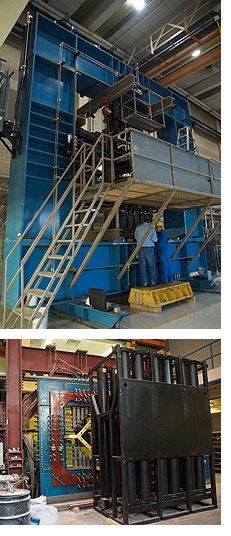 |
|---|
Projects Completed
ECE Undergraduate Computer Labs Project
With the expansion of Faculty administrative offices in GB, two ECE undergraduate laboratories (GB 144 and 150) were relocated to second floor SF In rooms 2101, 2102, 2105, 2105 A-D, 2110, 2111, 2112, 2112A and 2113 as illustrated in Illustration 2.
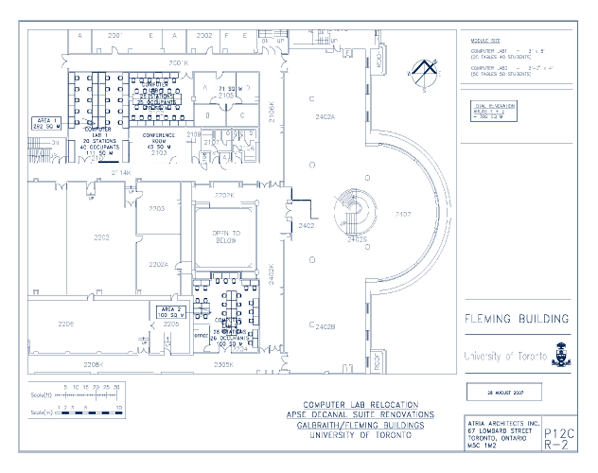
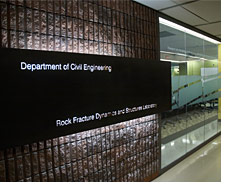 Rock Fracture Dynamics Facility
Rock Fracture Dynamics Facility
Two major CFI grants awarded to CivE faculty members of approximately $6M necessitated an internal review of space use within Departmental laboratories. In consultation with the current user group, a plan was formulated to renovate part of SFB510, and all of SF1001K, 1003, 1003K, 1004, 1005, 009, and 1009A to create an integrated facility worthy of the new state-of-the-art research tools acquired with the CFI grants.
The new facility consists of a Rock Fracture Dynamics Laboratory (RFDL), a Wireless Acquisition Structures Laboratory (WASL), and a Data Visualization Facility.
The RFDL is a unique polyaxial geophysical testing machine with CFI and industry funding, headed by Professor and Vice-President of Resarch, Paul Young.
The WASL comprises a wireless system for intelligent real-time monitoring of structures, with CFI/new opportunity funding, and headed by Professors Constantin Christopoulos and Paul Gauvreau.
The Visualization Facility provides interactive audio visual display of data and results from both laboratories. The combined laboratories and Visualization Facility enable new research to be performed, engaging members from both the Geotechnical and Structures Sections in CivE, and also significantly modernizes the space.
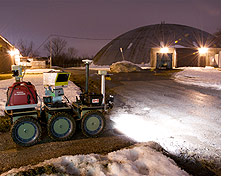
UTIAS Various Lab Renovations | Projects Related to Graduate Student Expansion
By: D.W. Zingg, Director of UTIAS
In order to accommodate recent and future growth in its graduate student population, UTIAS must prepare laboratory space for several new experimental facilities. These facilities will be required for thesis work of graduate students of four new professors at UTIAS, Timothy Barfoot, Alis Ekmekci, Philippe Lavoie, and Craig Steeves, all of whom will have a substantial experimental component in their research and will acquire and maintain a major experimental facility. Note that Professors Barfoot, Ekmekci, and Lavoie have successfully applied for CFI-LOF funding, and Professor Steeves will apply shortly.
Dr. Barfoot has acquired a robot suitable for planetary exploration, and his laboratory will be used for development and testing of this robot. Dr. Ekmekci will acquire a water tunnel and diagnostic equipment for fluid dynamics experiments. Dr. Lavoie will build a wind tunnel and diagnostic tools for flow control experiments. Dr. Steeves will purchase fabrication and testing equipment for new multifunctional materials. In all cases, these facilities will receive continuous use from graduate students in respective research groups. As of Sept. 2008, Dr. Barfoot will supervise nine graduate students, Dr. Ekmekci two, and Dr. Lavoie two. Dr. Steeves will begin at UTIAS in Jan. 2009.
To prepare laboratory space for these new facilities, several laboratories must be cleared of obsolete equipment and facilities. The first job prepared space for Dr. Barfoot’s and Dr. Ekmekci’s labs, which has been completed (Project number 049-08-075), and the cost estimate was $40,360, although the final cost may be a bit lower. The second job requires decommissioning an old wind tunnel to make space for Dr. Lavoie’s new one. The cost estimate for this job is $95,619 (049-08-109). A third job will involve clearing a lab to make space for a workshop area for graduate students to fabricate models, probes, actuators, samples, etc. I expect this job to cost in the vicinity of $30,000. Finally, a fourth job will involve removing some very heavy facilities to clear a lab for Dr. Steeves’ graduate students. The cost could be in the neighbourhood of $40,000.
To sum up, UTIAS will be undertaking four projects with a total cost estimated at $200,000 to prepare laboratories for the eventual continuous use of 30-40 graduate students.
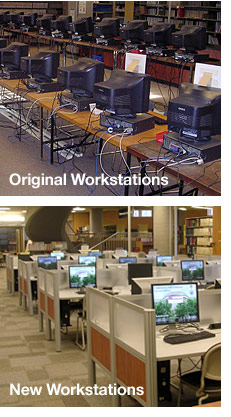
Engineering Library Improvements
The Engineering and Computer Science Library serves more than 7,000 students, faculty and staff. The last major renovation of this space was in 1982, during reconstruction of SF. The library renovation was suggested as a Student Experience Fund project in Oct. 2007. The proposal was drafted by the Engineering Library, with the support of the Faculty, the Student Experience Fund, the U of T Libraries, and the Faculty of Arts and Science. The Library recently completed a transformation that has resulted in a more appealing environment for its users.
What Was Achieved
- Created study space
- Improved computer workstations
- Round tables help group study
- Reference desk is closer to users
How
- New carpet
- New lounge chairs
- Plants
- Furniture rearranged
- Improved health and safety
MIE Design Labs | Undergraduate Design Facilities (UDF)
The Undergraduate Design Workshop (UDW) in MB71 and the Undergraduate Design Studio (UDS) in MB123 underwent extensive renovations this year. The upgraded facilities included:
Undergraduate Design Studio (MB123)
- Flexible seats and tables to encourage design teamwork
- Large scale printer and scanner
- Locker space for design project storage
- Networked card access lock to enable easier student afterhours access
Undergraduate Design Workshop (MB71)
- Extensive restock of tools including additional storage space
- Repair of windows and new air conditioning units
- Addition of locker space for design project storage (just outside of the room)
- Networked card access lock to enable easier student afterhours access
Overall the undergraduate students were pleased with the renovations to the UDF. Below is an excerpt from an unsolicited email from a third year MIE student who made extensive use of the workshop facilities as part of the MIE341 class project.
"Thank you for making the [Undergraduate Design Workshop] available...[it] made the construction of the CAD project run a lot smoother having good places to work and essential equipment."
MIE Fuel Cell Materials and Manufacturing Lab
Solid oxide fuel cells (SOFCs) are the most efficient known energy conversion device, producing electricity from a variety of fuels including renewable biomass, hydrogen, or natural gas, with no pollution-forming emissions. However, their use remains severely limited by high costs, as well as by low durability and reliability. Work in the Fuel Cell Materials and Manufacturing Laboratory is aimed at lowering the cost and improving the durability of fuel cells through the use of new materials and processing techniques to produce fuel cells more rapidly using a process that is easily scaleable for mass production. Work is also focused on understanding the electrochemical performance and degradation behaviour of SOFCs in order to develop strategies to increase their durability.
MIE Microfluidic Transport Phenomena and Bio-chips Lab
The Microfluidics Foundry is a new multi-user facility that focuses on the fabrication and integration of polymer-based laboratory-on-a-chip devices and complements U of T’s semiconductor cleanroom facility (ECTI).
Traditionally, biomedical microdevices are fabricated in semiconductor-grade cleanroom facilities and subsequently transferred to biomedical research laboratories or clinical settings. The Microfluidics Foundry aims to overcome several limitations associated with this sequential approach. The facility allows for aligned multi-layer soft lithography, the use of unconventional (polymer) materials in the fabrication process and, by Oct. 2009, aligned protein spotting within microfluidic networks.
Drs. Axel Guenther (MIE, IBBME), Craig A. Simmons (MIE, IBBME, and Dentistry) and Jonathan V. Rocheleau (IBBME, UHN) serve as co-directors of the facility that is currently used by approximately 10 research groups from across U of T and its associated teaching hospitals. The user groups are experts in labs-on-a-chip and micro-electromechanical systems, polymer processing, cell mechanobiology and microrobotics.
The facility was established with generous support from MIE, CFI, the Ontario Ministry of Research and Innovation, NSERC, Quorum Technologies and Bayer Technology Services.
CivE was successful in a recent submission to CFI under its New Initiatives Fund (NIF) to undertake a major redevelopment of the Structures Laboratories in SF and GB. This project will upgrade and modernize two existing structural laboratories to accommodate new, state-of-the-art testing equipment that will be purchased and installed under the CFI program.
This new equipment will enable researchers to undertake large-scale investigations into structural materials and systems under impact and high-velocity loading that is representative of extreme natural or man-made disasters. This research will generate enhanced design solutions for critical structures under such extreme loading conditions. A significant re-arrangement of the space between the two laboratories, and within the two laboratories, is needed to enable the new facility to become operational.
The new facility will be developed in space currently comprised of two existing Structures Laboratories located in the basements of GB and SF. The rearrangement of the space between the two laboratories requires removal of non-structural walls between the two existing open-height laboratories, the capture of a portion of an adjacent corridor, and the development of the newly created open space (that will be centrally located to both testing spaces) for specimen preparation. The ability to prepare specimens will free the main strong floor and strong wall areas and allow for optimal use of the facility. In addition, this redeveloped centrally located space will also house the new hydraulic power distribution system that will serve both structural testing laboratories.
The result of this renovation has created a national structural engineering super-laboratory for Canada within CivE that is networked to other structural facilities at École Polytechnique and McGill. In conjunction with the renovations and the reallocation of space in the basement of GB, but as a separate project, CivE relocated the Dunbar Undergraduate Teaching laboratory from its current location (room 13) adjacent to the new structural laboratory (rooms 29 and 30). The proximity of this undergraduate laboratory to the new, structural facility gives undergraduates higher exposure to ongoing cutting-edge structural research.
The accompanying floor plan (Figure 2) illustrates the proposed facility layout after renovations have been completed.
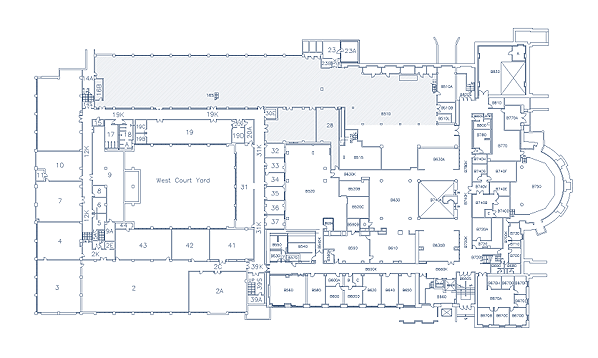
In response to the University’s plan to increase graduate student enrolment, Civil Engineering has created 24 new graduate student spaces in GB 213. The room has undergone extensive renovation, including demolition and asbestos abatement, new data network access provisions, updated architectural finishes, and new furniture. The Graduate Student Expansion program help fund this project.
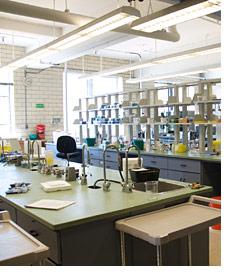
The Biozone research mission promotes meaningful and close integration of scientific, engineering and policy skill sets to create new clean technologies for cost-effective and sustainable production of bioenergy, clean water, and high-value co-products from underutilized biomass from Canada’s forest and agriculture sectors. It also informs policy decisions in these same research areas.
Phase I construction of Biozone included work in approximately 12 rooms in the west half of the 3rd floor of WB. A new air-conditioned equipment room was created, lab benching was replaced and upgraded, fumehoods and ventilation systems refurbished, along with a general renewal of architectural finishes to give the areas a fresh look.
Phase II includes more renovations to existing 3rd floor space, but also includes a significant rooftop addition adjacent to the Pulp and Paper Centre. The WB was originally constructed with the capability to accept a 4th floor addition and this would be a exciting opportunity to make use of that feature and add to the Faculty’s space inventory with high-quality research space. This additional space will enable the co-location of a unique group of experts from chemical engineering, biology, genomics, chemistry, computational mathematics, environmental science and public policy. Whereas in previous decades researchers from these different disciplines would have worked in isolation from each other, in Biozone they are in daily contact, working on the same problems, searching for practical solutions. The Phase II proposal is one of a number of CFI submissions the Faculty forwarded last year and a decision on the proposal should known early this summer.
ECE Graduate Student Office Improvements
As part of the Graduate Student Expansion program, ECE made significant improvements to graduate student office, research, administration, and seminar space, through the provision of new furniture, laboratory renovations, and new projection equipment, in multiple rooms in GB, SF, Pratt, Engineering Annex, and BA.
ECF Computer Labs were relocated from BA to GB to help facilitate the implementation of the EngSci Student Space project and the new Decanal Suite project, as well as to allow ECF to consolidate more of their labs in GB and SF, which improves the efficiency of maintaining the services. T-card access to GB has been added at the south-east entrance, opposite the Engineering Annex, for after-hours access by students. As well, the doors to both labs have been replaced with fully-glazed doors to create more inviting and open entrances.

Emerging Communications Technology Institute
E-beam
ECTI’s New Nanofacility: No Small Feat
By: Dr. Aju S. Jugessur
The Emerging Communications Technology Institute’s new Electron Beam Nanolithography Facility recently opened its doors to U of T researchers. This multimillion-dollar state-of-the-art lab allows researchers to fabricate tiny devices and to pattern features on the nanometre scale, but the realization of the facility was no small feat. It is a reality today, but as with many projects, there were numerous challenges on many fronts that had to be overcome along the way.
When funds were received from CFI in 2005 for the purchase of an electron-beam (E-beam) pattern generator, it was originally determined that the $4.5 million tool could be housed in an existing cleanroom on the 4th floor of Pratt. One section of the ECTI Microfabrication Cleanroom would be renovated and fitted to accept the tool.
However, after secondary tests were conducted in the cleanroom, the vibration levels on the 4th floor were found to exceed the criteria required for optimal performance of the tool. The building oscillates at a velocity of more than 10 micrometres per second, which is too small to be felt by humans, but was too high to guarantee exceptional performance of the E-beam. Try to imagine the impact of a vibration of that magnitude on an electron beam spot that has a size of 5 nanometres (about 2,000 times smaller than the size of a human hair).
It became clear that the E-beam tool would need a new home. The desired space would not only require a Class 100 cleanroom area to house the tool, but also an adjacent lab area for sample processing. A cleanroom is lab space that has a controlled amount of environmental contaminants such as dust and airborne microbes, and if it is rated as “Class 100”, the number and size of the particles present is very small (fewer than 100 particles of 0.5 micrometres in diameter are allowed per cubic feet). The technical requirements for the lab triggered upheaval mainly on two fronts: the first one was to find a space that could be made into a Class 100 cleanroom, and the second challenge was to come up with the funding required to renovate. As space is at such a premium on campus, it was not a trivial task to identify potential spaces in a short time span. The task was made more challenging because the new space had to be in a basement with low mechanical vibrations, low acoustic noise, and low electromagnetic interference.
The space hunt and vibration tests took almost six months; eventually a suite of three rooms in the Wallberg basement were identified as the best spot for ECTI’s new cleanroom. The walls between the three rooms would have to be demolished and the spaces combined to provide approximately 1,160 square feet. That size would just be sufficient to accommodate the E-beam tool, a process area, and a sufficient chase area where supporting equipment could be placed. However, the Wallberg space belonged to MSE, and ECTI’s home department is ECE. Fortunately, MSE was very cooperative, and had a keen interest in getting the facility built. The space negotiations between MSE and ECE, plus formal approval by central administration, were time-consuming but were finally concluded in early 2007.
Since the new lab site was in the basement, there were many air handler ducts and pipes that required relocation, affecting services in nearby rooms. It was clear that extensive renovation would be required which would be very costly. Because of the substantial site preparation required, along with the necessity of building a new cleanroom, the E-beam facility turned into a much bigger project than had originally been anticipated. The project was broken down into three phases:
Phase 1, renovation of the current site, which appeared a daunting task;
Phase 2, construction of a new Class 100 cleanroom; and
Phase 3, installation of the E-beam lithography tool.
The strategy adopted was to select a single contractor who would deal with Phases 1 and 2. ECTI had to prepare a well-defined scope of work and a detailed request for proposal document for the tender process. As one can imagine, this project involved many parties across the university, and good coordination was absolutely essential.
The renovation work started in Dec. 2007, completed by the end of Jan. 2008, then followed by the start of cleanroom construction in Feb. 2008, which took almost seven months. This was to be followed by commissioning of the cleanroom, and all signs were that it would be a straightforward process. However, a new challenge presented itself: the roof of the Wallberg Building would have to be repaired because of serious water leaks; if left unfixed, the potential damage to labs and offices on the upper floors was considerable. If the cleanroom air handlers, which are located on the roof of the building, had been active during the roof repair work, significant particulates would be sucked in, and would seriously impact the cleanroom air filters and compromise the lab. The decision was made to hold off on the cleanroom commissioning until the roof work was completed. Since the project was already running behind schedule, and the vendor of the E-beam tool needed to ship and begin installation, ECTI asked for a guarantee that the roof work would be completed by a specified date, with charges for any delay. Thankfully the roof work was completed on time, the roof-top cleanroom air handlers were switched on, and the cleanroom was commissioned. The final work phase involved the installation of the E-beam tool, a process which took three months, with some minor hiccups such as tracking down and repairing improper electrical wiring that was causing significant electromagnetic interference.
The ECTI Electron Beam Nanolithography Facility is now fully operational, and users from a number of disciplines are taking advantage of the versatility of the facility which also demonstrates the multidisciplinary nature of nanotechnology research.
The success of the PEY Internship program and the Engineering Career Centre led to outgrowing the BA location. While plans for a future permanent home are being developed, they are temporarily relocated in New College, 45 Willcocks St., 2nd floor.
This move has increased the amount of space available for the employer/student interview process and the support staff who organize and administer this program. The location also affords access to a variety of meeting spaces in the immediate vicinity that can address the other needs of both PEY and ECC. The current plan will see PEY and ECC remain at New College until Aug. 2010.
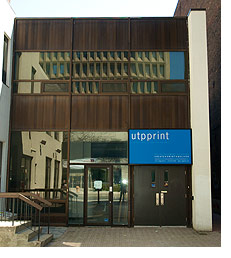
Last year the University purchased 245 College St. as a potential future development site. The Faculty requested and received permission to use the building in the interim for temporary student clubs’ storage and workshop space while longer-term plans for the site were developed, alleviating some of the acute needs for student club space. Lockable storage rooms and shared workshop space are being used by Concrete Canoe, Skule™ Nite, Orientation, and more, under the supervision of the Engineering Society. This arrangement will remain in place until the site redevelopment begins.
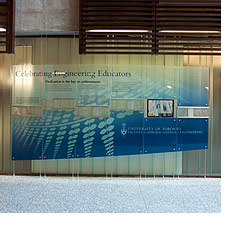
BA Atrium “Celebrating Engineering Educators” Recognition Wall
The Recognition Wall in BA Atrium was revealed Sept. 2008 at a gathering of faculty, staff and friends. The wall pays tribute to the many professors who have written and published Engineering textbooks during their time at U of T. and pays tribute to the great achievement of Adel Sedra and Kenneth C. Smith whose textbook Microelectronic Circuits sold its one millionth copy last year - making it the bestselling textbook of its kind.
The wall will receive an upgrade this spring to the multi-media display, which will soon be powered with a Mac Mini, and will be fully protected by a monitor shroud to be installed at the same time.
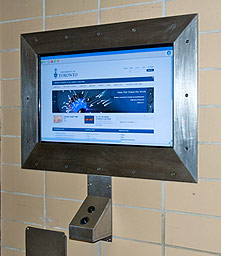
Mechanical Engineering Building LCD Directory
MIE installed two LCD monitors in the Mechanical Engineering Building, one in the hallway across from their main office and another in the main lobby, with mouse-type controls to allow visitors to access the U of T website. The screen savers on both monitors are set to display the MIE departmental directory and are automatically updated when any revisions occur.
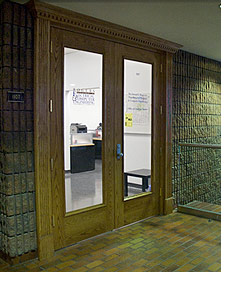 ECE Improvements to Office Entrances
ECE Improvements to Office Entrances
An example of how a modest design change can make a significant impact can be found in SF, where ECE has replaced the entrance doors to both the Office of the Chair and the Graduate Studies Office, on the first floor. The dark brown, monolithic, featureless steel doors installed as part of the re-building in the early 1980s, were replaced with fully-glazed, light-oak doors with detailed architectural surrounds. ECE has received many positive comments on the improved visibility and welcoming nature of the changes.
